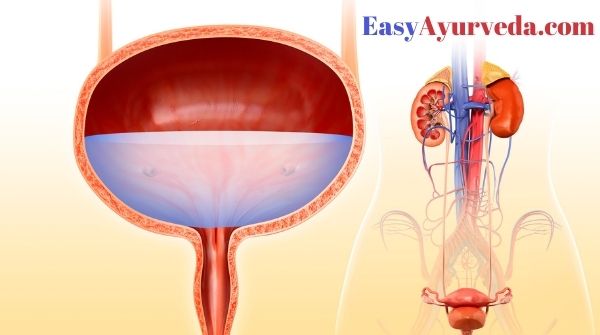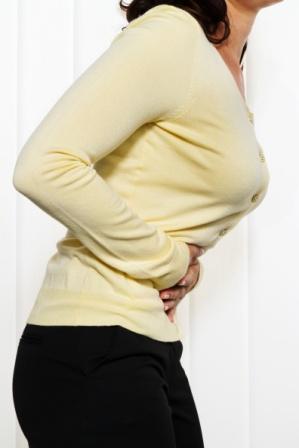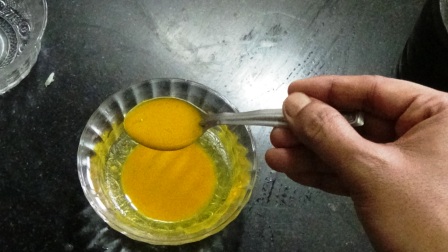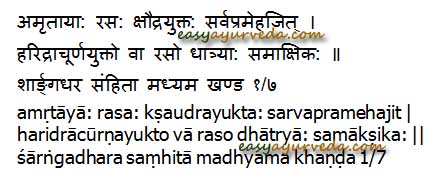Cystitis (UTI) In Ayurveda – Symptoms, Causes, Treatment
By Dr Raghuram Y.S. MD (Ay) & Dr Manasa, B.A.M.S
Cystitis is an inflammation of the bladder. Inflammation is where part of your body becomes irritated, red, or swollen. Urinary tract infection (UTI) would be the cause of cystitis in most cases. Certain medicines and hygiene products can also cause cystitis. It occurs in both male and male but most commonly occurs in women. Treatment depends on its underlying causes.
Read more about Cystitis – Modern view

Table of Contents
Causes
Urinary tract infection (UTI)
Taking certain drugs
Exposure to radiation
Ongoing use of a catheter
Irritating hygiene products
Symptoms
Frequent urge to urinate
Urge to urinate even after emptying bladder
Cloudy or strong-smelling urine
Low fever if in combination with a UTI
Blood in urine
Pain during sexual intercourse
Sensations of pressure or bladder fullness
Cramping in abdomen or back
Read – Dysuria: Causes, Remedies, Tips, Diet, Ayurvedic Treatment
Treatment
Antibiotics
Surgeries
Home Remedies
Applying heating pads over abdomen or back
Sitz baths to cleanse the pelvic area
Cranberry juice
Drinking lots of fluids
Wearing cotton underwear and loose fitting clothes
Avoiding any food or beverages that worse the symptoms
Read – Ayurvedic Home Remedy For Urine Infection And Painful Urination
Alternative therapies
Stretching the bladder with water or gas can temporarily improve symptoms.
Nerve stimulation can lower the frequency of bathroom visits and may relieve pelvic pain. Cystitis caused by radiation or chemotherapy, medication can help flush the bladder.
Prevention
Women should wipe from front to back after a bowel movement to prevent the spread of bacteria from feces.
Take showers instead of baths
Wash skin gently in the genital area
Women should empty their bladders after sexual intercourse, and drink water.
Avoid any products that irritate the area.

Cystitis In Ayurveda
Probable Ayurvedic correlation
Mutraghata – a subtype of obstruction of urine as explained in Ayurveda named Ushnavata can be closely correlated to cystitis. It is said to be caused by vitiated vata and pitta causing inflammation of urinary bladder, penis and rectum / anus. In this there is passage of urine mixed with blood, only blood or urine having turmeric / yellowish color. Difficulty in passing urine and urination in small quantities is the chief complaint of this condition. This is caused by excessive exercise, walking and exposure to sun. This condition is considered to be manifested due to cystitis or urethritis following infection with gonococcus or any other organism.
Mutrakrichra – Since difficulty in urination and incomplete evacuation of urinary bladder and frequency of urination are the chief complaints of cystitis, the condition can be compared with Mutrakrichra, especially vataja and pittaja type.
Vatika Shula in Basti – Vitiated vata can cause pain in different organs. When it causes pain in the urinary bladder, it is called as basti shula.
Read – Effects Of Constant Holding Urine: Ayurvedic Treatment
Samprapti – pathogenesis
Dosha – Vata, pitta
Dushya – mamsa (muscle), mutra (urine)
Srotas – Mutravaha srotas
Sroto dushti lakshana – sanga (obstruction)
Vyadhi Marga – Abhyantara (since urinary bladder is a visceral organ) and Madhyama (since bladder is also a vital organ)
Sadhyasadhyata – sadhya (curable)
Chikitsa – treatment principles
Treatment principles of Mutraghata – obstruction of urine and Mutrakrichra – difficulty and painful urination.
Other principles
Shotha Chikitsa – treatment of swelling, inflammation, mainly pittaja type
Jwara Chikitsa – treatment of fever
Raktapitta Chikitsa – if there is bleeding from urinary tract
Krimi Chikitsa – when there is evidence of infection
Udavarta Chikitsa – to combat vata and normalize its normal movements, downwards
Vataja and Mutraja Udavarta – treatment of upward movement or displacement of vata caused due to forcibly controlling the urges of fart and urine
Vatika Shula Chikitsa – treatment of colic caused by vitiated vata works in severe pain. Principles include oleation, sudation and administration of unctuous foods.
Gulma Chikitsa – treatment of abdominal tumors too can be preferred if other treatments are not yielding results and when pain is predominant. Urinary bladder is one of the organs said to be the seat of manifestation of gulma. Treatment of vataja type of gulma is effective in treating colitis.
Role of Panchakarma, upakarmas, useful medicines and herbs – explained in the context of treatment of urethritis and nephritis shall be administered skillfully. When the symptoms of acute manifestation are relieved, it is good to administer uttara vasti. This will not only prevent the recurrences but also will strengthen the bladder.
Read – Urinary Obstruction: Causes, Types, Symptoms, Ayurvedic Treatment
Additional external treatments –
Tila potali sweda – sesame seeds should be ground in kanji i.e. fermented liquid, made into bolus, and tied in a cloth so as to prepare a poultice. This is made hot and rubbed over the abdomen and region of bladder after applying vata alleviating oils.
Bilwadi pinda sweda – paste of bark of Aegle marmelos, bark of roots of castor plant and sesame seeds is made into bolus and sudation given as explained above.
Hingvadi lepa – asafetida, sesame oil and rock salt are mixed in cow urine and heated until it becomes a paste. This is applied around the navel and abdomen of the person suffering from pain due to colitis.
Medicines
Shankha Vati
Kankayana Gutika
Hingvadi Churna
Bhaskaralavana Churna
Pravala Pishti
proprietary medicines
Mutrala Kwatha
Tablet Oruclyn
Syrup Renalka
Capsule Rentone
Tablet Turaiko
Diet
Red rice
Sugar
Soup of horse gram
Milk of cow and goat
Raisins
Buttermilk
Castor oil
Garlic
Small sized radish
Drumstick – moringa
Lemon
Terminalia chebula – Arjuna tea
Click to Consult Dr Raghuram Y.S. MD (Ayu) – Skype
Amla, Turmeric Remedy for UTI
Ingredients
Amla – Indian Gooseberry – 1 fruit / 10 grams
Turmeric powder – 5 grams
Honey – 1 – 2 teaspoon.
Method of Preparation
Take Amla fruits, wash it, grate it into small pieces. Crush it in a mortar and pestle. Extract juice out of it by squeezing. With one fruit, you may get 1 – 2 teaspoon of juice.
Add turmeric powder to it mix well. Add 2 teaspoon of honey to it and mix well.
Home remedy video
Dosage
Dose – 1-2 teaspoon 2 times a day before food for 10-15 days time.
How long to take?
All the three are pretty basic, natural dietary ingredients. So, good to use for long term – 2-3 months of time, if required.

Rules for preparation
If you prepare it in the morning, you can use it till evening.
You can prepare slightly large quantity and refrigerate it so that you can use it for 2 – 3 days but keep in mind that such a refrigeration method is not an ideal practice as per Ayurveda.
Benefits
Useful in burning urination,
difficulty in urination, recurrent urinary tract infections,
lower abdominal pain (bladder pain),
chronic Urinary tract infection
prostatitis, Cystitis (Other medicines along with might be required)
FAQ
What if I have amla powder and not the fruit?
You can mix 1 teaspoon (5-6 grams) of amla powder with 5 grams of turmeric and mix it with 2 teaspoon of honey and use it 5 grams once or two times a day before food.
Keep in mind the amla fruit juice is the first choice.
If you are preparing with dry amla powder, then you can store this for 1 – 2 months of time.
Herbal powder shelf life is more compared to shorter shelf life of juice extract.
Can it be used in diabetic people?
If the blood sugar is under good control, then diabetic people can use it.
If the blood sugar is not under good control, then honey can be skipped from this remedy.
What can be done with the leftover amla pieces after squeezing it for juice?
It has still some minor nutritive value. You can eat it.
Organoleptic characteristics:
Sweet taste
Yellow colour liquid
Traditional Reference

Effect on Tridosha
Amla balances all the three Doshas, mainly Vata and Pitta
Turmeric balances all the three Doshas, mainly Kapha and Vata.
Honey balances Kapha Dosha.
So, together, a perfect combination for anyone with any Dosha type.
The overall potency of this remedy is slightly hot. (turmeric and honey are slightly hot and amla is a coolant).
Mode of action
Turmeric and amla are very good anti oxidants and anti microbial herbs. The same combination also exists in powder form called Nishamalaki Churna. Nisha is turmeric and Amalaki is Amla (Indian Gooseberry).
Read related: Amla Benefits, Dose, Usage, Side Effects – Complete Ayurveda Details
The Nishamalaki churna is widely used in the treatment of UTI and diabetes.
Turmeric is praised as one of the prime herbs for the treatment of disorders pertaining to urinary system.
Read related: Turmeric: Curcuma longa Benefits, Usage, Dose, Side Effects
Side effects and precautions
This remedy can be taken by children above 1 year of age.
Assuming that you use good quality of honey, it is safe to take during pregnancy and lactation period.
It is best to follow this or any other home remedy only after consulting a qualified Ayurvedic doctor. Read related: Prameha: Ayurvedic Approach To Urinary Disorders








